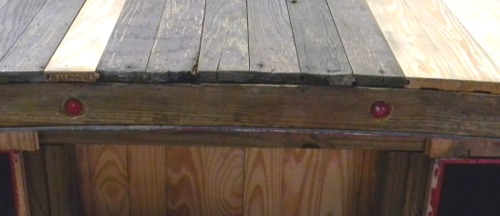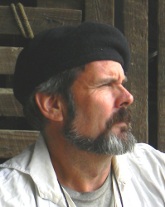You are hereCurved Facia Boards
Curved Facia Boards
This page is about restoring a caboose for the Rambler train. Ride it yourself, here's a link for more info:
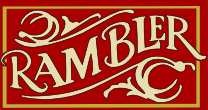 Ride the Rambler!
Ride the Rambler!
The existing facia boards were made of a single piece of “1 X 10” pine, probably #1 grade. Three of four were damaged and rotting. I wanted to make the replacements out of pressure treated wood; and because of time constraints, I used “Dried after treatment” pressure treated wood from Witt Lumber in Knoxville Tn. They have two locations here, and were helpful. The problem was that the DAT wood only came as a 1 X 6. So I had to lay up the boards side by side to get the width I needed. I didn't want the joints showing, and, the pressure treated wood can have a lot more grain texture showing than the untreated wood. So I used a laminated aluminum product as the outer skin, with the 1 X material for strength.
I've been very pleased with this material in the years that I've been using it. It's lighter, yet more rigid than a comparably priced sheet of aluminum. In fact, it costs a little less, and it cuts a lot easier. I think the first name brand on the market was called Diebond, what's available locally is a knockoff of that brand, called Polymetal. I bought a 4' X 10' sheet, from Vinyl Cutter Sign Supply, and had them cut it into four pieces about 1' X 10'.
In the first picture, I'm using one of the pieces of Polymetal to trace the shape of the existing facia board. Then I glued it to the PT wood. In the second picture, you can see the gluing process. The glue isn't critical for the durability of the project, it's mostly there to hold everything together while cutting the shape. I used “Better than Nails” adhesive, and let it dry for two days; yet there was still some failure in a few places. The glue adhered to both surfaces, but separated from itself. I sanded the Polymetal to get better grip with the glue. It comes with a very smooth, glossy surface.
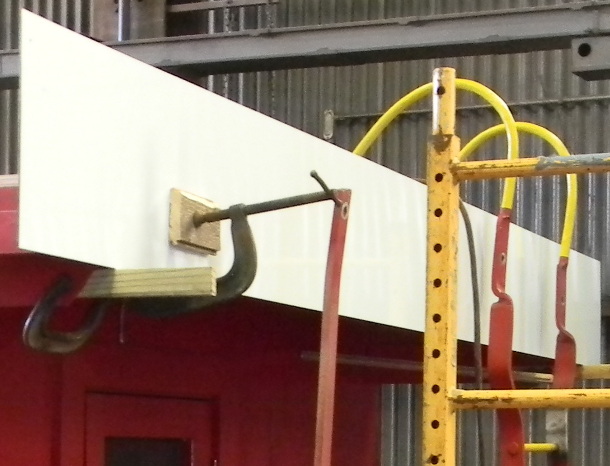
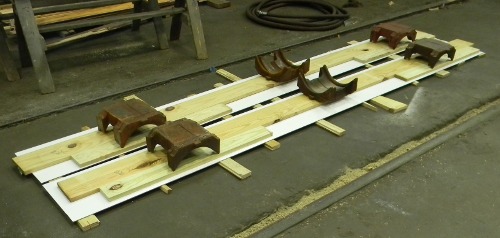
In the next picture, I've used masking tape to improve the consistency of the curve. The existing facia board had irregularities in the curve; flat spots and corner like places. Most people probably wouldn't notice, but having experience with this sort of thing in the sign trade, I wanted to have as nice a curve as possible. The tape gives me something with a little sideways stiffness, which lets me translate my arm and hand movements into a smoother arc. Then, I get my face just above the panel, so that I can see the curve in its entirety, similar to checking the edge of a board for straightness. I have a long stick with me, and if a see a flaw in my taped curve, I touch one end of the stick there, and hold it there while I'm standing up. The reason is that once I'm above the curve, viewing it from a 90 degree angle, it will be more difficult to see where the flaw is. So I fix it up best as I can. In this picture you can see where I discovered that the existing facia board was wider one one side of the curve than the other; right and left, not top curve and bottom curve. I tape a pen to my dividers, and draw the even curve on the tape.
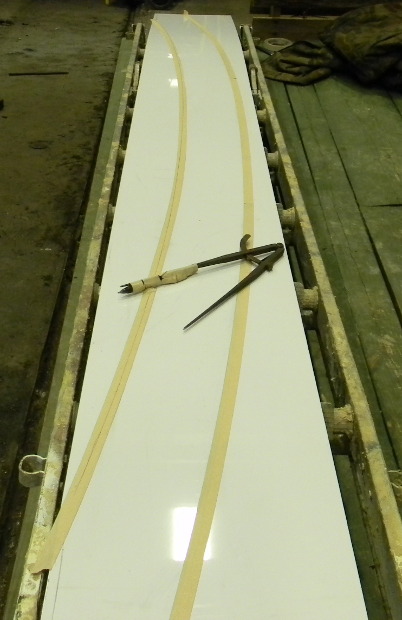
Next, I use the leftover curved rip board from the fitted wood stage to draw a nice curved line to show where the mounting screws will go. I used a few short screws to hold the unglued parts together until I got it into place, then removed them one at a time as I sank the longer decking screws.
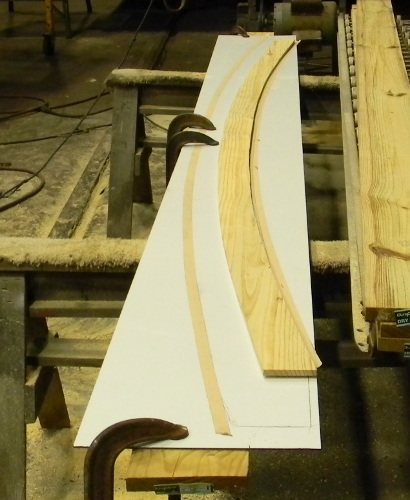
Finally, I use the circular saw to cut the curve, leaving the blade depth just low enough to pass through the material. This makes it easier to make a sideways motion, following the curve. What's really interesting is that the curves for the cupola roof are a slower radius than those for the roof just below it.
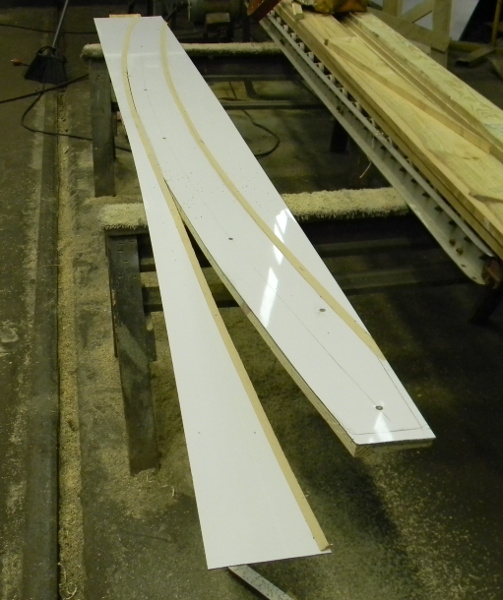
On the last restoration, the man left some bolts and nuts sticking out from the wood, then drilled out large holes on the backside of the facia boards to accommodate the nuts. He didn't go all the way through, just enough to house the nuts. I didn't want to deal with positioning the holes just right, so I removed the fasteners, turned them around, and countersunk a place for the bolt heads. I guess that the man did it that way to leave as much wood there as possible, for the sake of strength. My figuring is that the 3 inch angle iron is all the strength this part will ever need; and, the wood isn't steam bent, it's just cut out of a wide board. That means that the grain doesn't run with the curve, but across it, which is a lot less strong anyway. To me, the wood fitted in the angle iron is a place to sink nails for roof and siding boards.
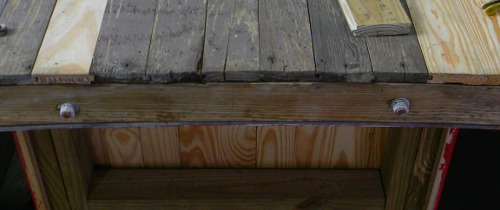
You can see that some of these boards are old looking; they're only that way on the ends, and there's a lot of support under the ends.
